The innovative artistry of Iconic designer Angelo Mangiarotti
Source:yatzer.com
Mangiarotti’s projects are staunchly modernist in their simplicity and practicality.
The successful marriage of functionality and aesthetics is usually a reliable yardstick for parsing good design but perhaps the ultimate litmus test is the test of time, albeit one that can only be applied retrospectively.
A master of twentieth-century Italian design, Mangiarotti' s projects are staunchly modernist in their simplicity and practicality but at the same time highly experimental and original, making them a paradigm of contemporary design and cutting-edge ethos even decades after he designed them.
This collection comprises chairs, tables, bookcases and containers designed over the course of four decades beginning in the mid-1950s, including Eros, a joint-less marble table that' s love at first sight the moment you come across it.
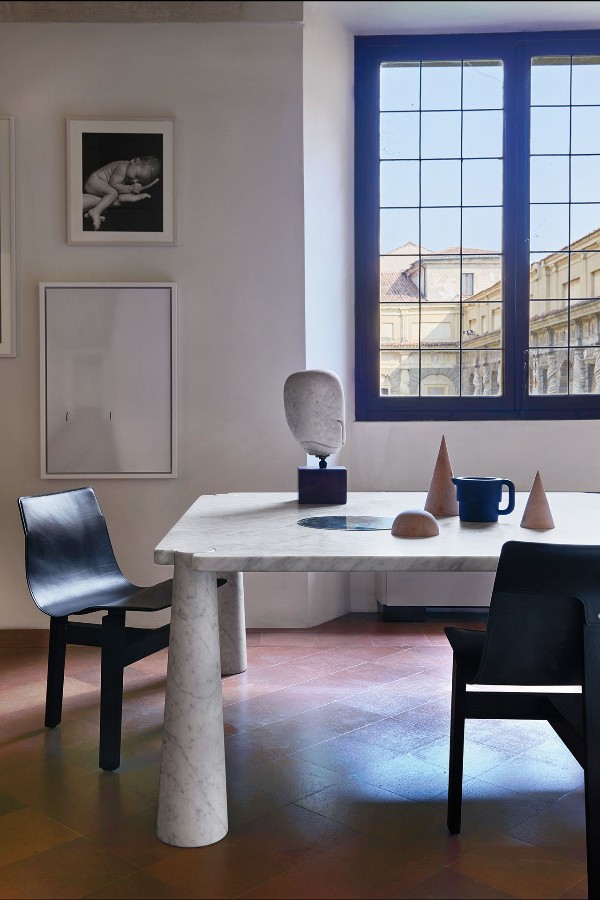
For Mangiarotti, although function was at the heart of industrial design, artisan craftwork also played a strong role.
Fascinated by materials and their qualities, he explored their tactile and formal values, playing with their weight and volume, and pushing conventional boundaries.
Underpinned by ground-breaking ideas and innovative techniques, in Mangiarotti' s hands marble becomes lightweight, iron effuses sensuality, and wood seems to move freely, imbuing his work with a singular sculptural presence often lacking in late-20th-century modernist design.
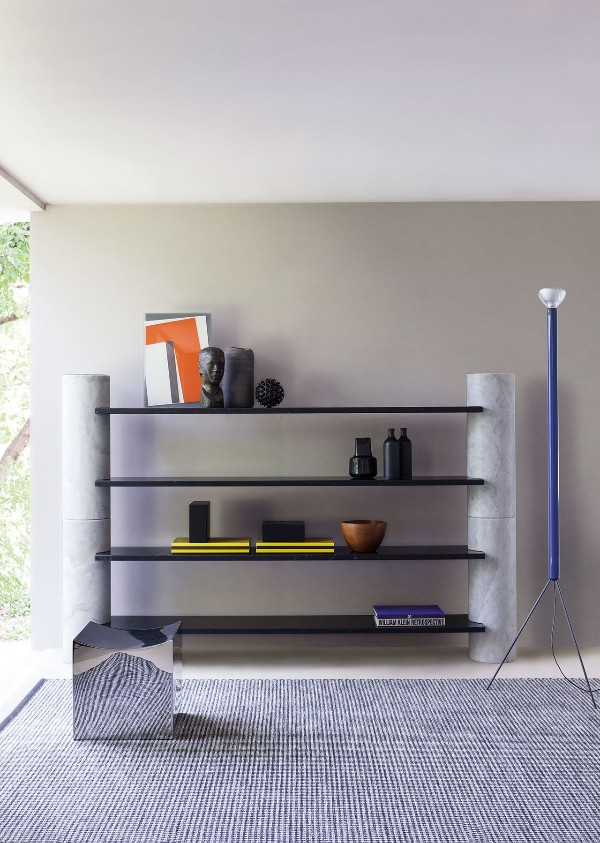
In the mid-1950s, Mangiarotti began experimenting with plywood, shaping thin layers into curving forms to increase rigidity, giving strength and stability to lightweight structures.
The Compensato table series that evolved from these experimentations is an innovative take on mid-century Scandinavian design, and are still impressive even today with their streamlined minimalism and compositional precision.
Another popular design from the same period that exemplifies the timelessness of Mangiarotti' s work as well as his focus on functionality and versatility is Cavalletto, a modular shelving unit made entirely of wood. Patented over fifty years ago now, it features a trestle in the shape of an upturned “V”, which allows shelves to be stacked by means of a simple gravity joint. Made out of multi-layered poplar with a choice of natural, brown or dark finishes, Cavalletto now also comes in a bench version that can be combined with the shelving units.
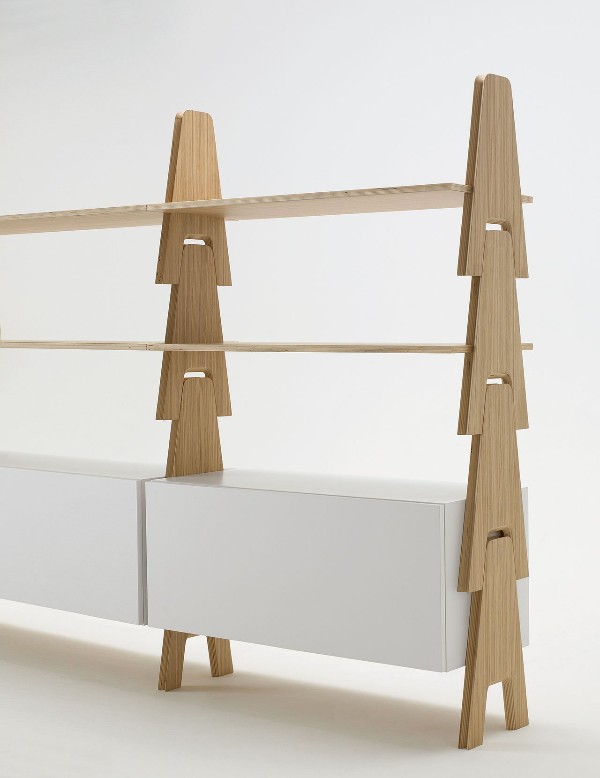
Eros was followed in 1978 by Incas, a series of tables that swaps the circular tops and conical legs of Eros for rectangular tops and truncated pyramid-shaped legs, followed by Eccentrico in 1979, an iconic composition featuring an elliptical tabletop embedded asymmetrically into an inclined cylindrical leg that made Mangiarotti a design superstar, and Asolo in 1981, whose trapezoid-shaped legs are the same thickness as the rectangular top.
All four series are now available in the original white Carrara, grey Carnic and black Marquinia marble, as well as two new versions in green Alpi and Emperador marble. Meanwhile, the More table series from 1989, the collection’s most recently designed piece features gravity joints, and combines marble or plywood tops with four steel legs.
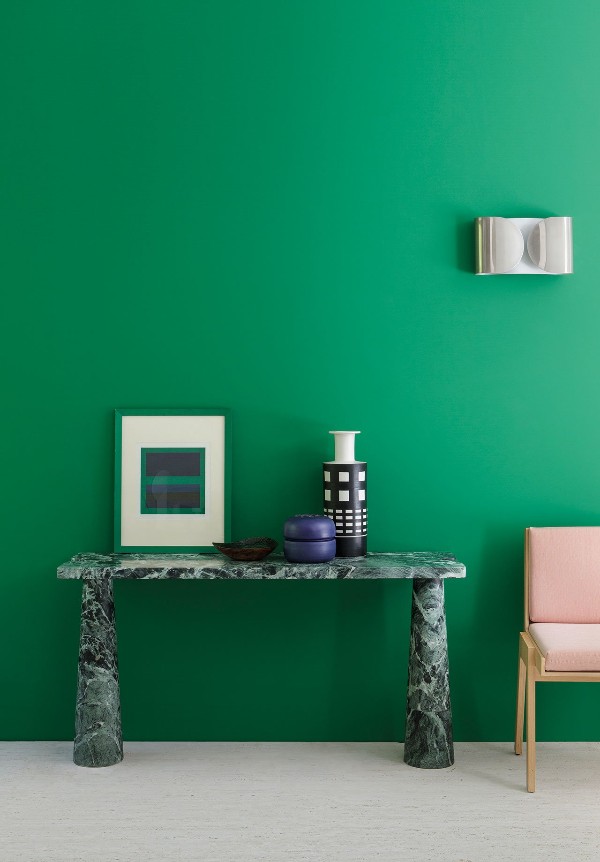
The designer' s enduring fascination with marble is attested by his Loico modular bookshelves, a system of cylindrical, stackable weight-bearing marble elements, and Clizia, a sinuous, cantilevered seat designed in 1990 whose monolithic form belies a complex design and elaborate manufacturing process.
The seat is crafted from a single block of marble, surgically carved by numerically controlled machines in such a way as to simultaneously create two chairs, reducing waste to a minimum.
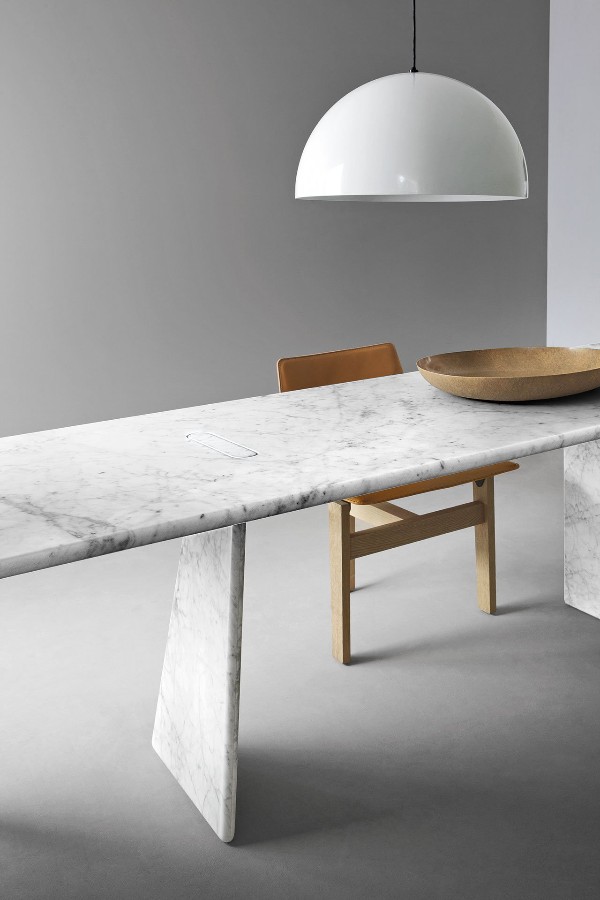

 沪公网安备31010402003309号
沪公网安备31010402003309号



